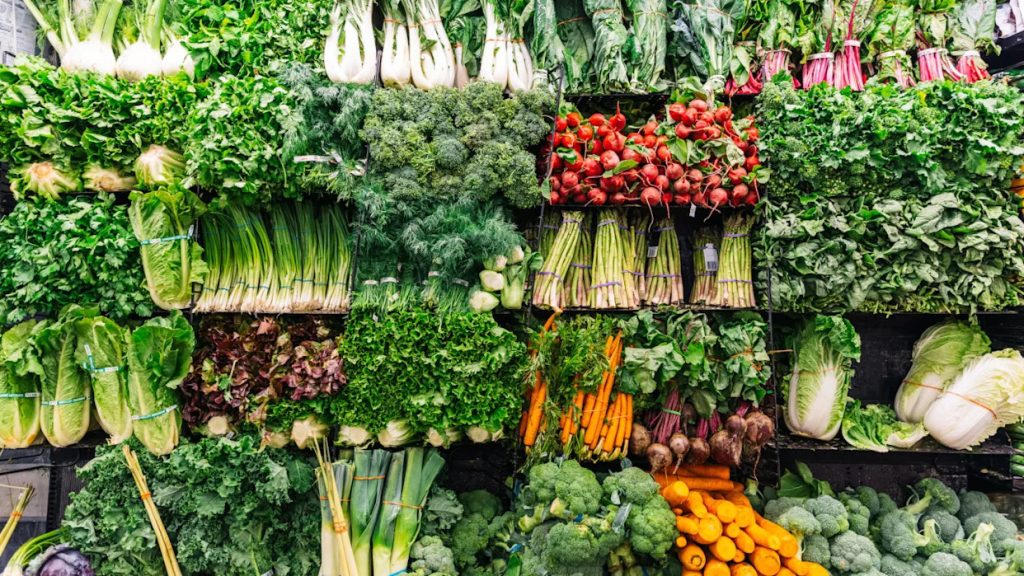Eating More of This Vegetable Might Be the Easiest Way To Lower Hypertension

Eating More of This Vegetable Might Be the Easiest Way To Lower Hypertension originally appeared on Parade.
When you think of cardiovascular health issues, your mind may drift to hospitals, life-saving visits to the emergency room and medications. Hospitals and medications can save lives and help people manage their heart health. However, other habits can also play a significant role in supporting your overall health, including lowering blood pressure.
Cardiologists want people to understand that small, healthy choices add up. A recent American Heart Association report found that cardiovascular disease remains the top killer of U.S. adults. However, the organization highlighted the increase in people living with hypertension as a reason for this dubious distinction. Diet is one risk factor for high blood pressure—and heart disease in general—that people have control over.
“Maintaining a healthy diet can go a long way towards helping to control your blood pressure,” says Dr. Cheng-Han Chen, MD, a board-certified interventional cardiologist and medical director of the Structural Heart Program at MemorialCare Saddleback Medical Center.
What does a blood pressure-friendly diet look like? Cardiologists and dietitians agree that it often includes one vegetable that can help people lower hypertension. They share the vegetable, ways to enjoy it and alternatives.
Eating More of This Vegetable Can Help You Lower Blood Pressure, Cardiologists and RDs Agree
Want to lower hypertension ASAP? Fill your cart with spinach during your next trip to the grocery store. “Spinach can help to lower blood pressure through a few different mechanisms,” Dr. Chen says. “The relatively high nitrate content in spinach can increase nitric oxide levels in the body, relaxing your blood vessels.”
Also? Move over, bananas. Spinach is also a rich source of potassium, which matters for heart health. “Potassium is a mineral that helps balance sodium levels in the body by helping relax blood vessel walls,” explains Kathleen Garcia-Benson, RDN, a registered dietitian with Top Nutrition Coaching. “This can help ease pressure on the cardiovascular system.”
A 2023 Nutrients study suggested that eating leafy green vegetables, including spinach, may help people lower their blood pressure.
Importantly, spinach isn’t the only leafy green vegetable in the produce aisle, nor is it such a superfood that eating it will guarantee that your blood pressure lowers and stays in a healthy range. One cardiology dietitian stresses that no food belongs on that kind of lofty pedestal.
“No single food can improve blood pressure on its own,” reports Michelle Routhenstein, MS, RD, CDCES, CDN, a cardiology dietitian and owner of EntirelyNourished.com. “Instead, considering your overall dietary pattern, and the foods and pairings you include, is essential for supporting blood pressure and heart health.”
However, Routhenstein agrees with Dr. Chen and Garcia-Benson—the nitrate and potassium content in spinach provides a double whammy that makes it an excellent choice for people aiming to keep their blood pressure in check.
How Much Spinach Do You Need To Eat To Lower Blood Pressure?
There isn’t a specific dosage of spinach to eat if you want to lower blood pressure, explains Dr. Nishant Kalra, MD, an interventional cardiologist and regional chief medical officer at VitalSolution, an Ingenovis Health company. However, Dr. Kalra points to data suggesting that consuming about 350 to 400 milligrams of nitrate can benefit the heart.
“This aligns with the DASH diet, which recommends at least four servings of vegetables per day,” Dr. Kalra explains.
If adding milligrams of nitrates sounds too stressful, Routhenstein has a way to simplify your spinach intake. “Consuming about one to two cups of raw spinach or a half or full cup of cooked spinach four to five times a week can help you reap these benefits,” she says.
Routhenstein loves working spinach into soups, sandwiches and salads with tomatoes.
Garcia-Benson enjoys spinach:
- Tossed into burrito bowls
- Sautéed with eggs, mushrooms and other veggies in the morning
- Blended into smoothies (“You won’t taste it!” she reveals.)
Alternatives to Spinach That Can Lower Blood Pressure
If hiding spinach in your smoothie doesn’t sound appetizing, rest assured, there are other ways to get your fix of heart-healthy veggies. In the leafy-green family, Garcia-Benson reports that:
- Kale is nutrient-dense and easy to use, cooked or raw
- Swiss chard is packed with potassium and magnesium
- Arugula is mild and nitrate-rich like spinach
“It’s not just about spinach—getting vegetables in daily, ideally with most meals, is supportive of healthy blood pressure levels,” Garcia-Benson says. “If you want to use spinach every day, go for it. However, rotating your greens week to week can help reduce food waste and keep things interesting.”
Speaking of which, variety is more than the spice of life. Eating an array of colorful foods (AKA the rainbow) is also vital to ensuring that you’re getting the vitamins and minerals your heart needs to thrive. She also recommends:
- Beets, which are also high in nitrates, can help relax blood vessels and boost circulation
- Sweet potatoes are rich in potassium, fiber and magnesium, balancing fluids and sodium
- Avocados, which are packed with potassium, magnesium and heart-health fats that assist with blood pressure regulation
- Strawberries and blueberries that are loaded with antioxidants, reducing inflammation and supporting blood pressure function
- Bananas—OK, maybe don’t move over just yet. “These are one of the most potassium-rich fruits, supporting sodium regulation and healthy hearts,” Garcia-Benson says.
Garcia-Benson isn’t a fan of “eat this, not that” advice, even when it comes to blood pressure. “Rather than focusing on restriction, I encourage people to prioritize adding nutrient-dense foods to their plate,” she says. “That naturally pushes out some of the higher-sodium, added-sugar, or high-saturated-fat foods without being overly rigid.
Still, she concedes it’s important to be mindful of a few components when choosing meals, including limiting:
- Highly processed foods
- Fried foods
- Sugary drinks and sweets
- Cured meats and snack foods that can add sneaky high amounts of salt
Other Tips To Support Blood Pressure
Diet is a critical way to lower blood pressure and prevent hypertension. However, cardiologists recommend taking a holistic approach. Dr. Chen suggests:
- Engaging in regular physical activity
- Maintaining a healthy weight
- Avoiding alcohol and tobacco
- Getting enough quality sleep
- Managing stress
That advice might sound simple, but managing blood pressure can feel complicated. Remember, support is available. “If you’re concerned about high blood pressure…consult a primary care provider or cardiologist for evaluation and management,” shares Dr. Kalra.
A registered dietitian can also help you craft a heart-healthy diet—including dishing out delicious ways to enjoy spinach and other vegetables.
Sources:
- Heart and Stroke Statistics. American Heart Association.
- Dr. Cheng-Han Chen, MD, a board-certified interventional cardiologist and medical director of the Structural Heart Program at MemorialCare Saddleback Medical Center
- Kathleen Garcia-Benson, RDN, a registered dietitian with Top Nutrition Coaching
- Vitamins and Minerals for Blood Pressure Reduction in the General, Normotensive Population: A Systematic Review and Meta-Analysis of Six Supplements. Nutrients.
- Michelle Routhenstein, MS, RD, CDCES, CDN, a cardiology dietitian and owner of EntirelyNourished.com
- Dr. Nishant Kalra, MD, an interventional cardiologist and regional chief medical officer at VitalSolution, an Ingenovis Health company
- Increasing Nitrate-Rich Vegetable Intake Lowers Ambulatory Blood Pressure in (pre)Hypertensive Middle-Aged and Older Adults: A 12-Wk Randomized Controlled Trial. The Journal of Nutrition.
Eating More of This Vegetable Might Be the Easiest Way To Lower Hypertension first appeared on Parade on Jul 26, 2025
This story was originally reported by Parade on Jul 26, 2025, where it first appeared.


